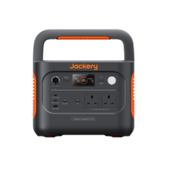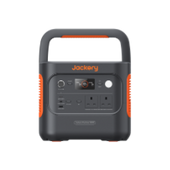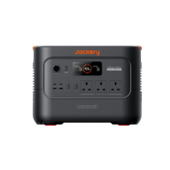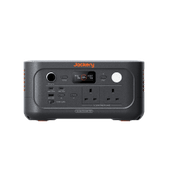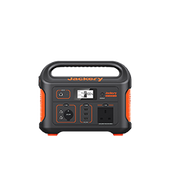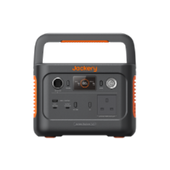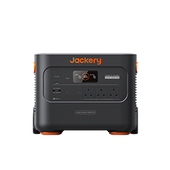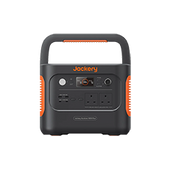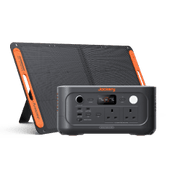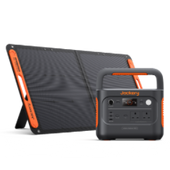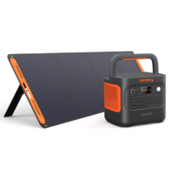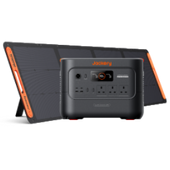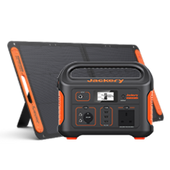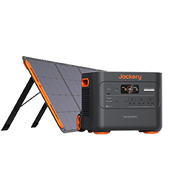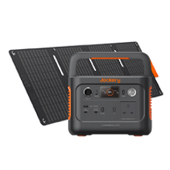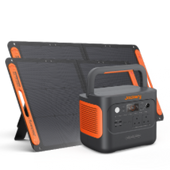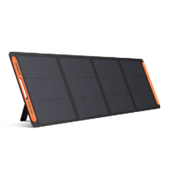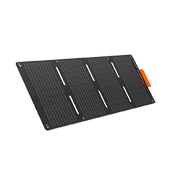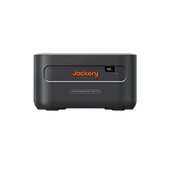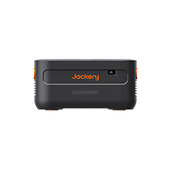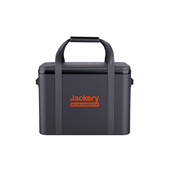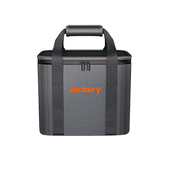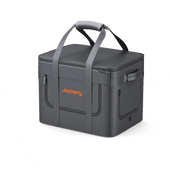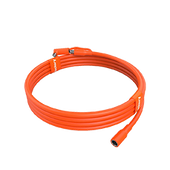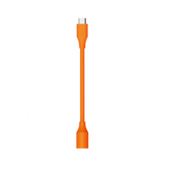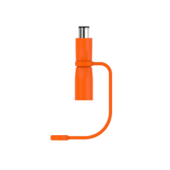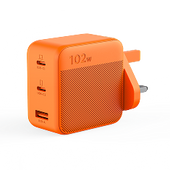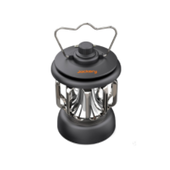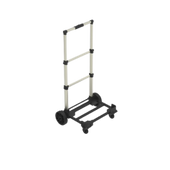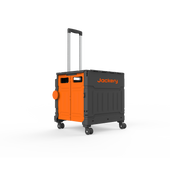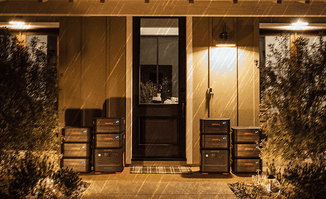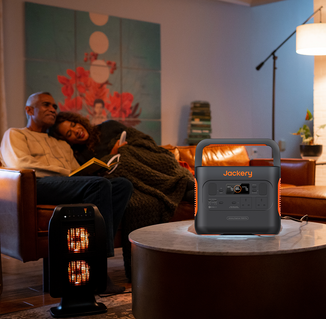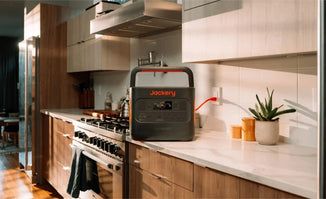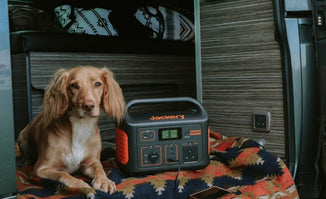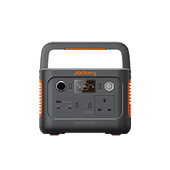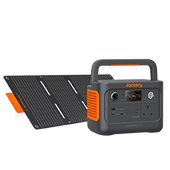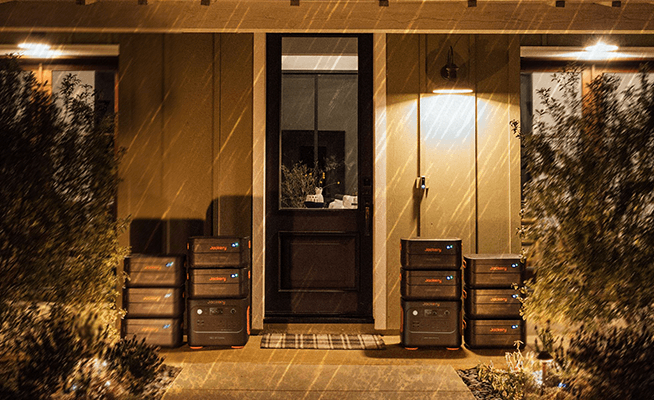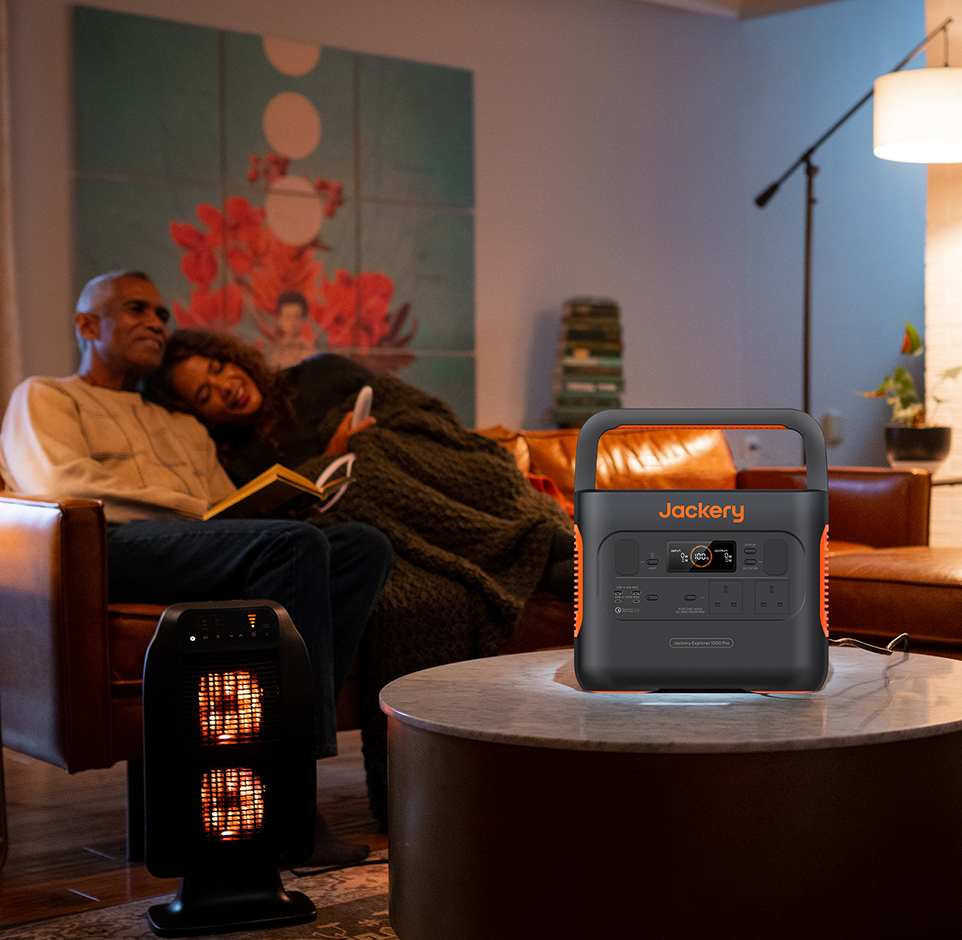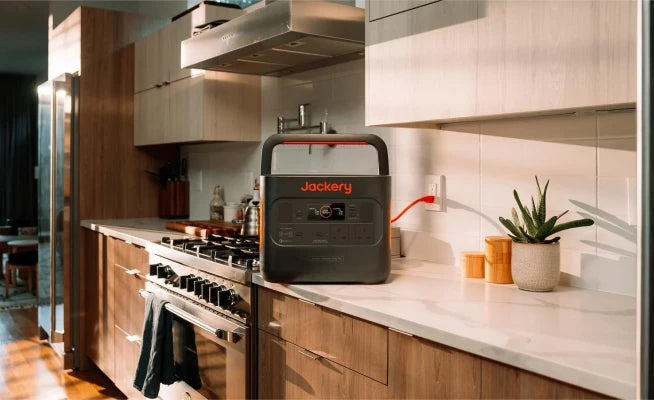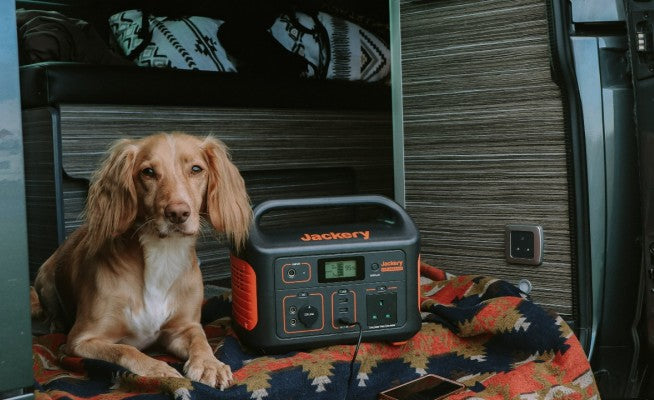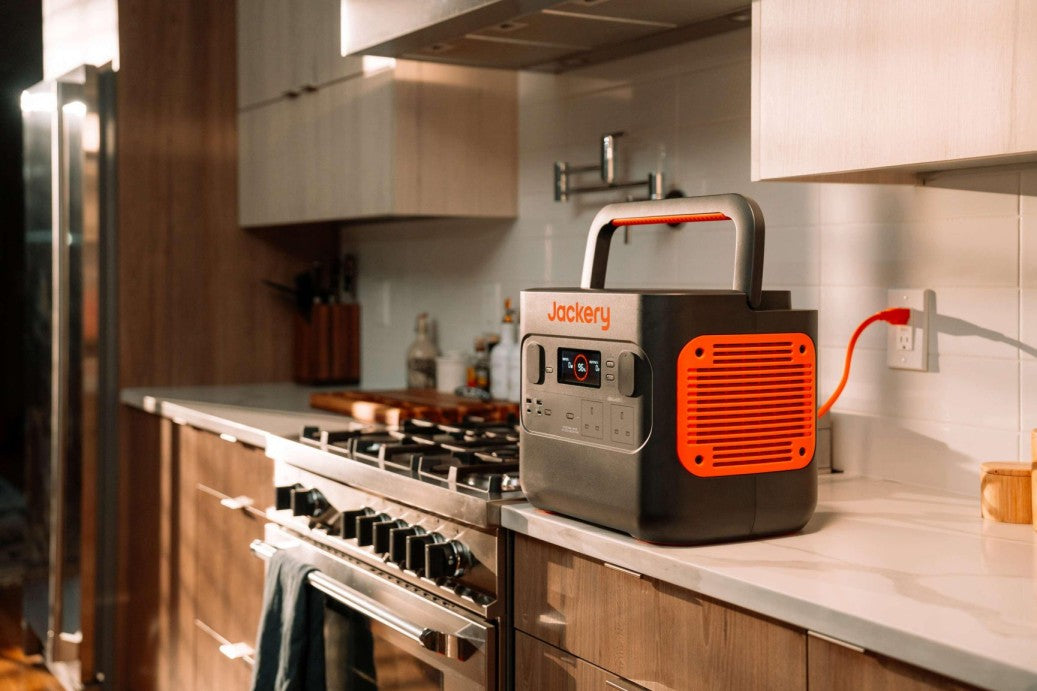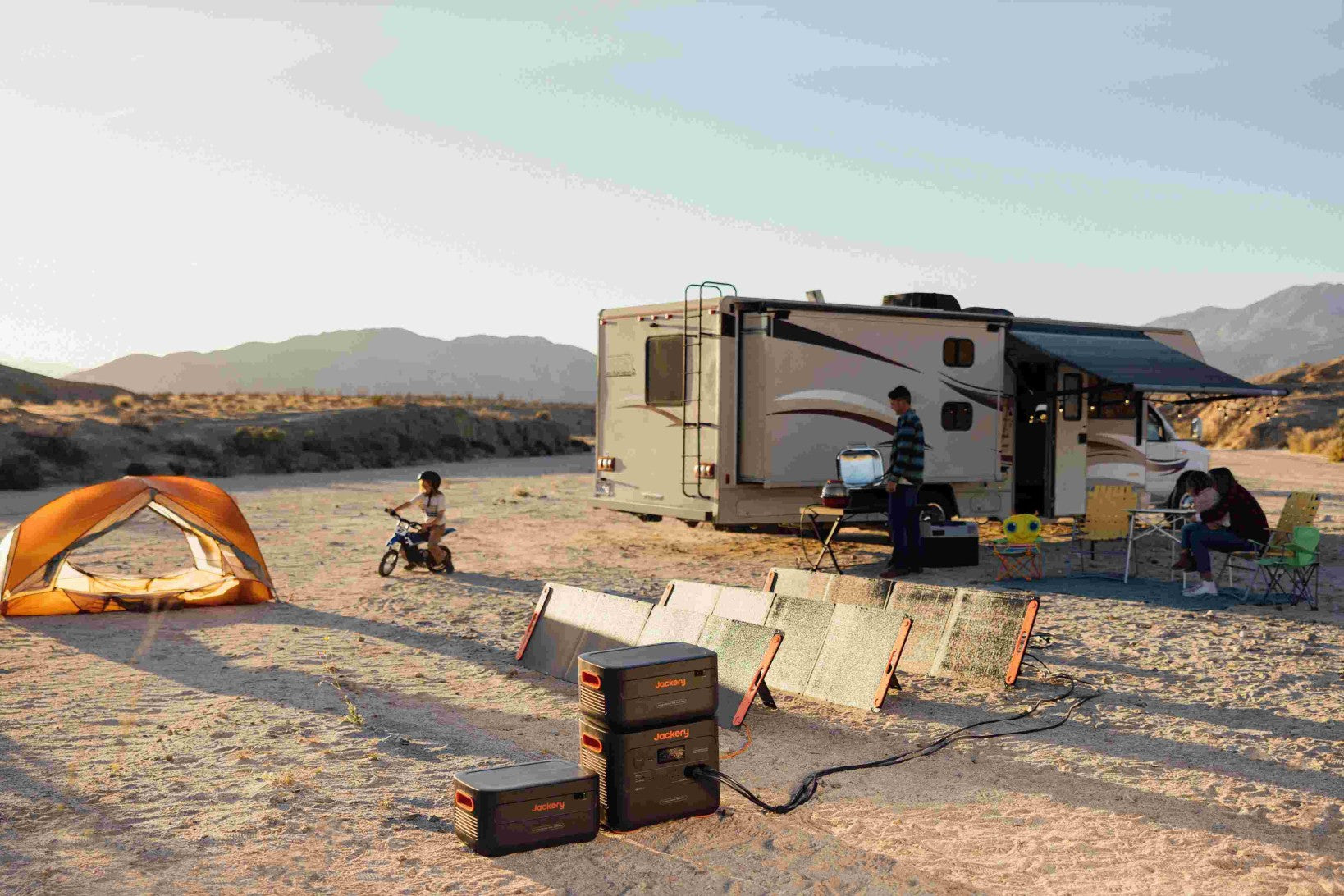UK families always look for reliable power backup options to lower their electricity bills as energy costs grow. Power generators are used in the UK since electricity prices are higher than in most EU countries. Small and portable generators are becoming popular. These flexible devices are desirable home power backup supplies because they combine ease, efficiency, and reliability. What size generator should you buy for your home?
This article will discuss whether a 3000W generator can power your home. Moreover, we recommend Jackery Explorer 2000 Plus, 2000 v2 and 3000 v2 portable power stations as 3000W solar generators to effectively power your household appliances or outdoor devices.
|
Key Takeaways: |
|
- A 3000W generator provides enough power for essential home appliances like fridges, lights, Wi-Fi routers, and TVs, making it ideal for emergency backup. - A 3kW generator is not suitable for running high-demand appliances simultaneously. - Solar generators are the greatest option for delicate electronics, providing modern households with clean, steady, and quiet electricity. - Solar-powered 3000W generators, such as the Jackery Explorer 2000 Plus, 2000 v2 and 3000 v2 are suited for low-load, environmentally beneficial, and portable power applications. - A 3000W generator balances performance, fuel efficiency, and cost, making it one of the most popular choices for UK homeowners. |
Basics of 3000W Generators
In the context of portable electric generators, the term "3000-watt" refers to the power output capability of the generator, which is measured in watts. This value is the maximum amount of power the generator can deliver to devices and appliances without causing any damage to them.
For instance, a generator with a power output of three thousand watts can often provide electricity to important appliances such as refrigerators, lighting, and heating systems simultaneously, making it suitable for use in times of emergency or for meeting temporary power requirements.
What Are Starting Watts And Running Watts?
The term "starting watts" refers to the momentary spike of wattage required to start a device, whereas "running watts" refers to the wattage needed to run the device at this continual speed.
It is interesting to note that the starting watts of generators are typically given in the product description. This is due to the fact that the starting watts are the higher of the two. Therefore, it is vital to seek the actual specifications in order to verify the running watt capability. In order to prevent unwelcome circuit breaks, it is necessary to consider both the beginning and running wattage.
How To Calculate Starting Watts And Running Watts?
It is not difficult to calculate the two wattage figures; first, add the running watts of all the devices that you want to power, and then add the largest starting watts of the devices that you have chosen. The maximum starting watts must be included in the specifications for your generator's starting watts, which are added together. For instance, if you require 4950W, you will require a generator capable of producing at least 2600 total running watts and 4950 total beginning watts during operation.
While you are performing this calculation, there are a few important things to keep in mind. Depending on the circumstances, you might need to take into account the possibility of multiple people using the same circuit and possibly starting two devices at the same time. Additionally, it is important to remember that certain devices may experience surges, such as starting watts while operating. This is typically observed for devices with multiple power modes and is generally mentioned in the user manuals of those devices.

Can a 3000W Generator Run Your Home?
A 3000W generator can power some portions of your house but not all of it at once, particularly if you have high-power appliances like electric stoves or heaters. It works better for running necessary appliances during a power outage or emergency backup. Practically speaking, it would operate as follows:
|
A 3000W Generator Can Run in a Typical UK Home |
Won't Work with a 3000W Generator |
|
Fridge/Freezer (100–800W) |
Electric oven or stove |
|
Lighting (60–300W) |
Electric central heating |
|
Laptop/Phone Charger (50–150W) |
Multiple large appliances |
|
TV or Router (100–200W) |
|
|
Microwave (800–1200W) |
|
|
Kettle (2000W) |
|
|
Washing Machine (1000–2000W) |
|
|
Electric Heaters (1000–2000W each) |
|
Key Points to Consider:
Startup Power: It is possible for certain appliances, such as refrigerators or air conditioning units, to have an enormous surge during startup, which can be up to two to three times their running wattage. As a result, even though these appliances are rated at 1000W, you might require a generator with a capacity of 3000W to manage the surge that occurs during startup.
Load Management: When using multiple appliances simultaneously, you must adequately manage each one. It is essential to avoid overloading a generator rated at 3000W by ensuring that the overall load is kept below the rated output.
Battery Backup: It is possible that a solar generator with a power output of 3000W can only power specific devices for a limited amount of time and for a particular amount of time, depending on the size of the battery. Solar systems are effective when used with low-load appliances such as lights, phones, and laptops but not as effective when used with heavy-duty systems such as heating and cooking.
In conclusion, a 3000W generator can power vital appliances such as lights, small devices, and refrigerators. However, if you rely on it for long-term or full-house backup (such as heating, cooking, or huge appliances), you'll need something more powerful or be careful about what you run concurrently. If you need to maintain many things operating simultaneously, you might think about getting a larger generator or a solar generator with additional battery capacity.
What Types Of 3000W Generators Best-Suit Your Needs?
A wide range of generators are available, each with unique capabilities and applications. Your priorities will determine which 3000W generator is best for your home in the UK, whether those requirements are silent operation, outdoor use, fuel type, or backup for power outages.

Inverter Generator
Inverter generators are among the most modern types of generators available. Its method of producing electricity differs from that of standard models. While typical generators produce AC power directly from the alternator, inverter generators transform the AC power into DC before regenerating it into a clean, consistent AC output. This creates more stable voltage and frequency, making them perfect for delicate electronics such as laptops, mobile phones, and medical devices.
How It Works: The generator regulates the power production using microprocessors, ensuring a steady and safe flow of electricity. It also adjusts engine speed to actual power requirements, resulting in greater fuel efficiency.
Pros:
It is less noisy than conventional generators.
It has a variable engine speed, which allows for exceptional fuel efficiency.
It is compact and portable, making it easy to store and use.
It generates clean, stable electricity that is safe for sensitive electrical devices.
Cons:
In general, they are more expensive than normal gasoline generators.
They generally have a lower maximum power output, although some types are available with 3000W.
Best For: For residential use, caravanning, camping, powering electrical equipment, and quiet locations where noise is an issue, this product is ideal.
Petrol Generator
A petrol generator is a common and traditional kind of generator powered by gasoline. It is a popular option for people seeking occasional backup power or for outdoor activities because it is among the most accessible and reasonably priced sorts.
How It Works: It generates AC energy by spinning an alternator using an internal combustion engine that runs on gasoline. There are two types of these generators: manual and electric start.
Pros:
The initial investment is low, and it is simple to locate in hardware stores.
The gasoline is readily available, making it practical during emergencies.
It is ideal for use on an occasional or short-term basis.
Simple in both operation and maintenance
Cons:
It is loud when operating, and it is not appropriate for calm areas.
Since it produces fumes and necessitates adequate ventilation, it is unsuitable for use inside.
Additionally, it is less fuel-efficient than diesel models when used for more extended periods of time.
Best For: Occasional backup use during power outages, do-it-yourself projects, and outdoor activities such as festivals or barbecues are the best uses for this product.
Diesel Generator
Diesel generators are renowned for their dependability and effectiveness, particularly when operating at high loads. They are frequently utilized in off-grid or rural areas where reliable or long-term power is needed.
How It Works: Diesel fuel ignites without spark plugs because it is compressed in a high-pressure combustion chamber. The generator is powered by the engine, which is powered by the ensuing explosion.
Pros:
It is more fuel-efficient than petrol, particularly for continuous or heavy-duty use.
It has a longer operating life due to lower wear and tear.
It can run for lengthy periods of time without overheating.
It displays strong performance even in hostile settings.
Cons:
It is heavier and bulkier, which makes it difficult to transport.
It is noisier than other types, which can be bothersome in residential areas.
It has a higher initial cost and may require more robust maintenance.
It generates more emissions than solutions that use LPG or solar energy.
Best For: Farms, rural properties, homes that are not connected to the grid, and industrial applications that require regular power are the best candidates for this product.
Dual Fuel Generator
With a dual-fuel generator, you can run it on gasoline or liquefied petroleum gas (LPG). This flexibility is quite helpful when one type of fuel may not be available, such as during emergencies or gasoline shortages.
How It Works: With a dual fuel system, you can use an automatic switch or an integrated selector valve to switch between LPG and gasoline. Switching between fuel kinds without shutting them off is possible with specific models.
Pros:
It provides fuel flexibility, enabling the incorporation of cleaner LPG technologies.
LPG is safer to store for more extended periods of time and emits fewer emissions than other types of gas.
The use of LPG cylinders results in more extended run periods and less wear on the engine.
Additionally, it is useful in situations where the supply of fuel may be unexpected.
Cons:
More storage space is required for LPG bottles.
It is heavier owing to multiple fuel system components.
It is slightly more expensive than generators that just generate one fuel type.\
Best For: These are the best solutions for consumers who are looking for long-term fuel options, homeowners who choose cleaner fuels, and emergency preparedness professionals.

Solar Generator
A solar generator, often known as a portable power station, is a quiet, clean power source powered by solar energy. It uses a built-in battery to store power rather than burning it to create energy.
How It Works: Large internal LiFePO4 or Li-ion batteries are charged by solar panels. The generator employs an inverter to transform the stored DC electricity into AC power for domestic appliances. Additionally, several offer 12V and USB ports for convenience.
Pros:
The utterly silent operation makes it suitable for use inside or at night.
It is exempt from emissions, making it environmentally beneficial.
Low maintenance due to the absence of moving parts.
It is capable of being charged using solar power, an AC wall socket, or a vehicle.
It is suitable for use with sensitive electronic devices.
Cons:
It has a higher initial cost in comparison to fuel generators.
It relies on the weather; its performance decreases when it is cloudy or raining.
It has a limited power supply and does not have a huge battery storage capacity.
Solar panels require a specific area.
Best For: It is ideal for eco-conscious users, indoor users, small electronics, remote workstations, and clean energy enthusiasts.
|
Types of 3000W Generators |
Features |
|
Inverter Generator |
Best for home use and sensitive devices Quiet Fuel-efficient Provide clean and stable power (safe for electronics like laptops, TVs, routers) |
|
Petrol Generator |
Best for occasional backup use and outdoor use Lower upfront cost Widely available Noisy Not ideal for long-term use indoor Need good ventilation |
|
Diesel Generator |
Best for regular or prolonged use and rural/off-grid homes More durable Better fuel efficiency under heavy load Longer lifespan Noisier, heavier, more expensive |
|
Dual Fuel Generator |
Best for people who want to stock up on gas bottles for emergencies or prefer a cleaner fuel Fuel flexibility Cleaner-burning LPG option Longer run times |
|
Solar Generator |
Best for indoor and outdoor use No emission Low maintenance Sustainability Unlimited source Silent operation Lightweight and portable Relatively expensive but cost-effective Weather dependent |
Jackery Portable Power Stations Explained
After the comparison, we can see that the 3000W solar generator has more advantages over others, such as being clean, portable, easy to use, and more. We recommend the Jackery Portable Power Stations, which can pair with Jackery Solar Panels to use solar energy fully.
At the same time, the Jackery Portable Power Stations are portable generators with multiple output ports and recharging methods. You can recharge it with solar panels on sunny days and with wall sockets or carports on rainy or sunny days. Considering the 3000W generators, we think the Jackery Explorer 2000 v2, 2000 Plus and 3000 v2 are best for you.
Another good news is an Exclusive Early Bird Benefits for Jackery 3000 v2. You can get Up to £350 Off a free Gift Package worth £327.99 (Free Gift Package: Car Charging Cable + Extreme Guard Carrying Bag + Trolley). For new subscribers, you will have a chance to win a FREE Explorer 3000 v2 + £50 Stackable Discount & Free Trolley! Free to join now!
Jackery Explorer 2000 v2
The Jackery Explorer 2000 v2 Portable Power Station has an astounding 2042Wh capacity and 2200W output, enough to power most household appliances or outdoor devices, such as refrigerators, CPAP machines, lights, etc. It also has two AC outlets, one USB-A 18W port, and two USB-C ports (100W + 30W), so you can charge several devices simultaneously indoors and outdoors.
There are many ways to recharge it, including 2*SolarSaga 200W (5.5 hours), regular wall charging (1.7 hours), and car charging (24 hours). With Emergency Super Charge Mode, which can be activated through the Smart App, the power station can be charged from 0% to 80% in just 52 minutes with Emergency Super Charge Mode, which can be activated through the Smart App. This feature is ideal for situations where power is required urgently. A complete charge requires only 103 minutes in regular AC charging mode.
The world's first 2kWh LiFePO4 power station, which features advanced EV-grade CTB (Cell to Body) Structure technology⁵, is engineered to be more compact and lightweight. It weighs a mere 38.6 lbs—approximately the same as a suitcase. It is the ideal power solution for off-grid living, camping, and road trips and features a foldable handle for effortless transport.

Highlights of Explorer 2000 v2:
- 2042Wh Capacity & 2200W Output. Powers most of devices, lasts 10 years (4000 life cycles).
- Lightest and smallest 2kWh LiFePO4 power station. 41% Smaller and 35.6% Lighter than the Industry Standard, only weighs 38.6 lbs.
- AC/Solar/Car/AC+Solar/AC+Car; Full battery in just 1.33 hours with Emergency Super Charge.
- ChargeShield 2.0 protection technology. 62 layers of comprehensive protection with safety standards certification.
- Ultra-quiet operation via App. Charging mode noise ≤ 30dB.
Jackery Explorer 2000 Plus
Jackery Explorer 2000 Plus is more powerful and versatile than 2000 v2. It is a solid portable power solution that delivers outstanding outdoor activities and home backup performance. With its impressive capacity and powerful output, this device can support the operation of many appliances.
The Jackery Explorer 2000 Plus enables the addition of extra battery packs, increasing the capacity from 2 kWh to an impressive 12 kWh, thereby significantly satisfying your power needs. This solar product has a remarkable output of 3000W, which can charge almost all essential appliances indoors or outdoors, such as your coffee makers, electric ovens, lights, power tools, and more.
The Explorer 2000 Plus stands out as a groundbreaking add-on battery pack that offers the convenience of recharging through solar panels, wall outlets or carports. This feature increases versatility, boosts charging efficiency, and shortens charging time.
ChargeShield is Jackery's advanced fast charge technology, featuring 62 protective mechanisms, 12 protective algorithms, and four types of physical safety protection. This technology uses a unique stepped variable-speed charging algorithm to enhance safety and extend battery pack lifespan by 50%.

Highlights of Explorer 2000 Plus:
- Expandable for versatile scenarios: 2-12 kWh of expandable capacity.
- Leaping performance: powers heavy-duty devices up to 3000W.
- Ultra-fast solar charging: Advanced IBC technology allows for fast solar charge in 2 hours.
- Long-lasting reliability: outstanding LiFePO4 battery with a 10-year lifespan.
- ChargeShield technology: using a unique variable-speed charging algorithm, fast charge technology boosts battery life by 50%.
Jackery Explorer 3000 v2
While the 2000 Plus excels in its expandability to truly massive capacities (up to 12kWh), the Explorer 3000 v2 is "better" for users who want the strongest, most capable standalone power station in the Jackery lineup, combining high output, large native capacity, and excellent portability for its class.
The 2000 Plus offers 3000W, and the 2000 v2 offers 2200W. With 3072Wh capacity, 3600W continuous and 7200W surge power, its increased wattage means the 3000 v2 can confidently run even more power-hungry appliances simultaneously or handle devices with extremely high startup demands. Think of running a full-size RV air conditioner, multiple high-wattage kitchen appliances, or heavy-duty power tools. This offers the most versatility in terms of what you can power.
The 3000 v2 has a larger built-in battery capacity than both the 2000 Plus (2042.8Wh) and the 2000 v2 (2042Wh). While the 2000 Plus is expandable to much higher capacities with external battery packs, the 3000 v2 provides a substantial 3kWh of power out of the box. For many users, this single-unit capacity is more than sufficient for extended off-grid periods without the need for additional bulky battery packs.
Despite having a significantly higher native capacity and output than the 2000 Plus, the 3000 v2 is actually lighter (around 27 kg / 59.5 lbs) compared to the 2000 Plus (approx. 27.9 kg / 61.5 lbs). Jackery has specifically engineered the 3000 V2 for a more compact and lightweight design within the 3kWh class. This is a huge advantage for mobility.

Highlights of Explorer 3000 v2:
- No more spoiled food or missed moments during outages.
- Power all your essentials and appliances indoors and outdoors with 3600W output and 7200W surge.
- Fully recharged in as fast as 1.7 hours.
- 5 versatile recharging methods (AC, solar, car, AC+DC hybrid, gas) give you peace of mind and rapid readiness.
- World's smallest 3kWh LFP generator with ZeroDrain™ tech—95% power retention after 365 days.
How to Choose the Best 3000W Generator?
You can select the most suitable 3000W generator for your home, travel, or emergency backup application by first gaining an awareness of your power requirements and then comparing the features of several generators. When selecting a 3000W generator, you can keep the following in mind:

Power Type: Choose between solar generators and standard fuel-powered generators (petrol or diesel), taking into consideration the use case you have in mind (off-grid versus clean energy).
Surge Capacity: If you intend to run appliances with extremely high beginning requirements, you should select a generator capable of handling surge watts.
Portability: If you need mobility, look for compact devices with wheels or handles, such as those for camping or multi-location use.
Runtime and Fuel Efficiency: When it comes to fuel generators, it is important to determine how long the generator can operate with a full tank while operating at a load of between fifty percent and one hundred percent.
Noise Levels: If you want a quieter operation, use an inverter generator or an enclosed model. This is especially pertinent in residential areas.
Battery Storage (for Solar): If you intend to use solar power for an extended period of time, you should make sure that the generator you purchase has an adequate battery capacity or that it allows for extension.
Outlet Types and Number: Make sure it has the appropriate combination of AC and DC outlets (including USB or 12V vehicle connections) for the gadgets you intend to use.
Brand Reliability and Warranty: With the goal of ensuring product support and durability, it is important to select a brand like Jackery that has a good reputation, solid reviews, and a warranty.
3000W Generators FAQs
The following are the frequently asked questions about the 3000W generators in the UK.
1. What will a 3000-watt generator run?
A generator with a power output of three thousand watts may provide power to critical home appliances such as refrigerators, freezers, lights, televisions, computers, and some power tools and camping equipment. However, it cannot simultaneously provide power to large, high-wattage appliances such as central air conditioning or a washing machine.
2. Is a 3kw generator enough to run a house?
A 3kW (3000W) generator can power the essential sections of a home, but it is insufficient to power everything at once. It's adequate for keeping important appliances operating during a power outage, such as a refrigerator, freezer, lights, Wi-Fi router, and a few small electronics; however, high-consumption items such as electric ovens, kettles, or heaters may overload it if used simultaneously.
3. Is a 3000-watt generator big enough for a camper?
The ideal generator size for typical 30 Amp campers is 3,000 watts. You are able to control your camper refrigerator, fans, microwave, lights, laptop, and phone chargers. Therefore, the Jackery solar generator 2000 Plus and solar generator 2000 V2 are excellent options for a pop-up camper.
4. Will a 3500W generator run a house?
Indeed, a home can be powered with a 3500W generator. However, to determine how many appliances you can operate simultaneously, you will need to total up your appliances' running and starting wattages. For instance, a washing machine (800W) and refrigerator (700W) can be operated together (1500W).
5. How big of a generator is needed to run a house?
The size of the generator needed to power a house depends on the quantity and type of appliances. A 3kW to 5kW generator can power the lights, fridge/freezer, Wi-Fi, TV, and electronics for basic backup. For energy-intensive items like electric stoves, washing machines, electric showers, and central heating systems with electric pumps, you may require a 7kW to 10kW generator or greater.
Stronger standby generators (10kW–20kW) are recommended for full-house backup, including heating and cooking. Allow for surge (starting) power and calculate the overall wattage of the appliances you intend to run simultaneously to determine the proper size.
Final Thoughts
For UK households seeking reliable backup power during outages or off-grid demands, a 3000W generator is a practical and efficient option. It powers fridges, lights, laptops, and routers, making it appropriate for most common uses. Powerful equipment like electric ovens and central heating systems may not work well with it. With load management and knowledge of your household's power needs, a 3kW petrol, diesel, or solar generator may provide peace of mind and reliable performance.



